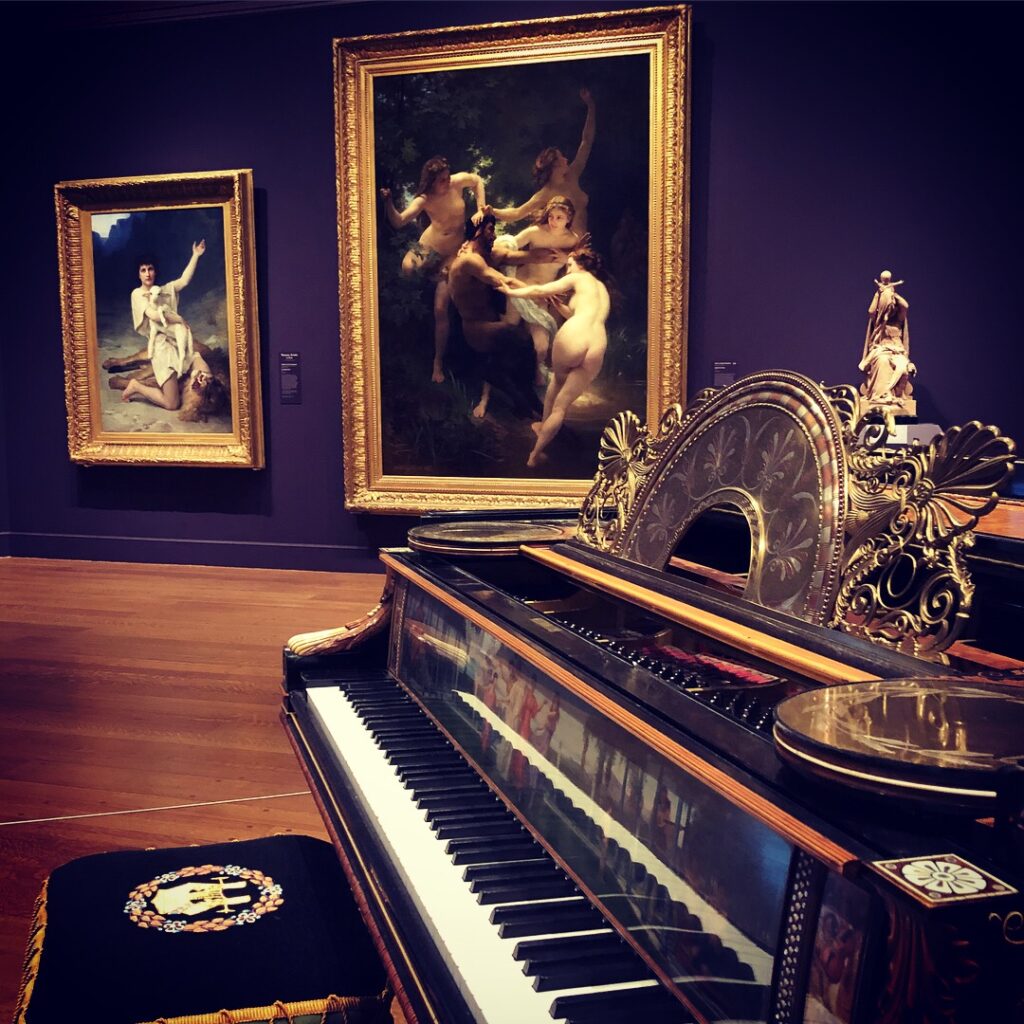
The painting “Nymphs and Satyr” by William-Adolphe Bouguereau hangs in the background in the gallery at The Clark Art Institute. Photo by Michael Aaron Gallagher.
By Michael Aaron Gallagher
One of my all-time favorite painters is the French artist, William-Adolphe Bouguereau (1825-1905). Many of his works are on display across the United States. Whenever I find a museum that is showing his work, I often travel out of my way to visit it. And the more of his paintings I see, the more I wish I owned one in my personal art collection (click here to read about The Michael Aaron Gallagher Fine Art Collection).
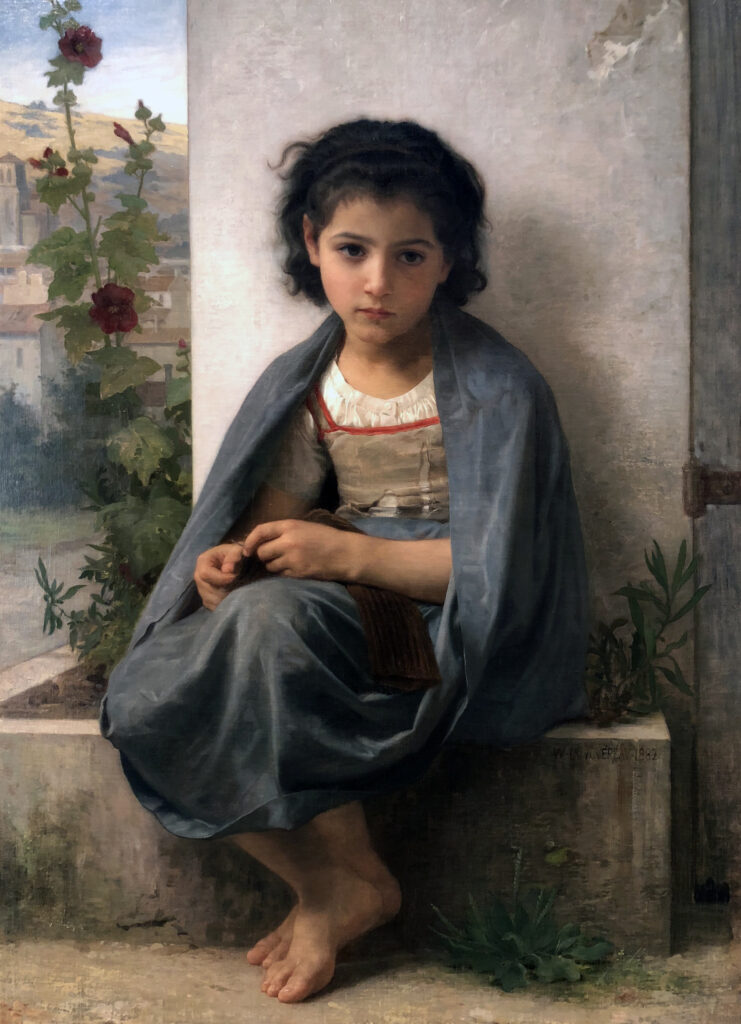
“Little Knitter” (1882) by William-Adolphe Bouguereau, on display at the Norman Rockwell Museum. Photo by Michael Aaron Gallagher.
Although Bouguereau (pronounced boo·gr·ow) attracted criticism in his day for having a romanticized artistic style, which often depicted peasant girls in idealized settings, wearing unnaturally clean, untattered clothes, he was especially revered at the Paris Salon, even as the Impressionists were dominating the art scene. It was his popularity with American art buyers in particular that led to his paintings being imported into the United States and it is one of the main reasons his art is in so many American museum collections today.

“By the Sea” (1903) by William-Adolphe Bouguereau, on display at the Norman Rockwell Museum. Photo by Michael Aaron Gallagher.
There are a number of things I like about his work – his technical proficiency and use of light, his ability to depict his subject in a way that draws your eye to the painting, the expressions of the subjects themselves and even the way he signed his paintings. Bouguereau had the skill of the great masters with the marketing genius of a modern pop artist. He understood the nature of beauty and what his audience desired and he capitalized on both.
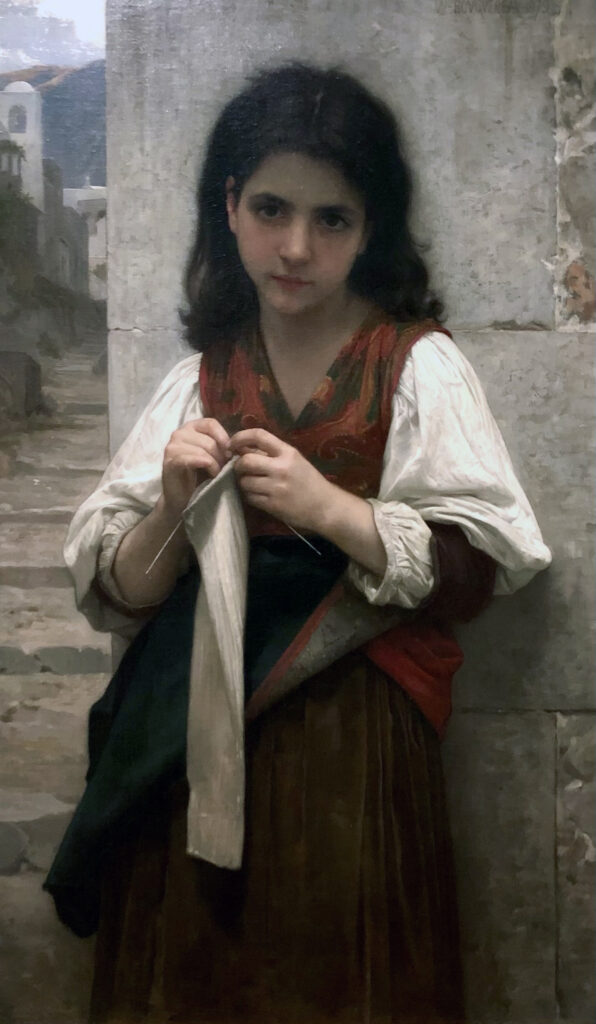
“Tricoteuse (The Knitter)” (1879) by William-Adolphe Bouguereau, on display at the Appleton Museum of Art. Photo by Michael Aaron Gallagher.
His creative influences can even be seen in the work of his contemporaries like Émile Munier, who painted “A Winter’s Catch” and his student, who he eventually married, Elizabeth Jane Gardner, who painted “The Shepherd David.”
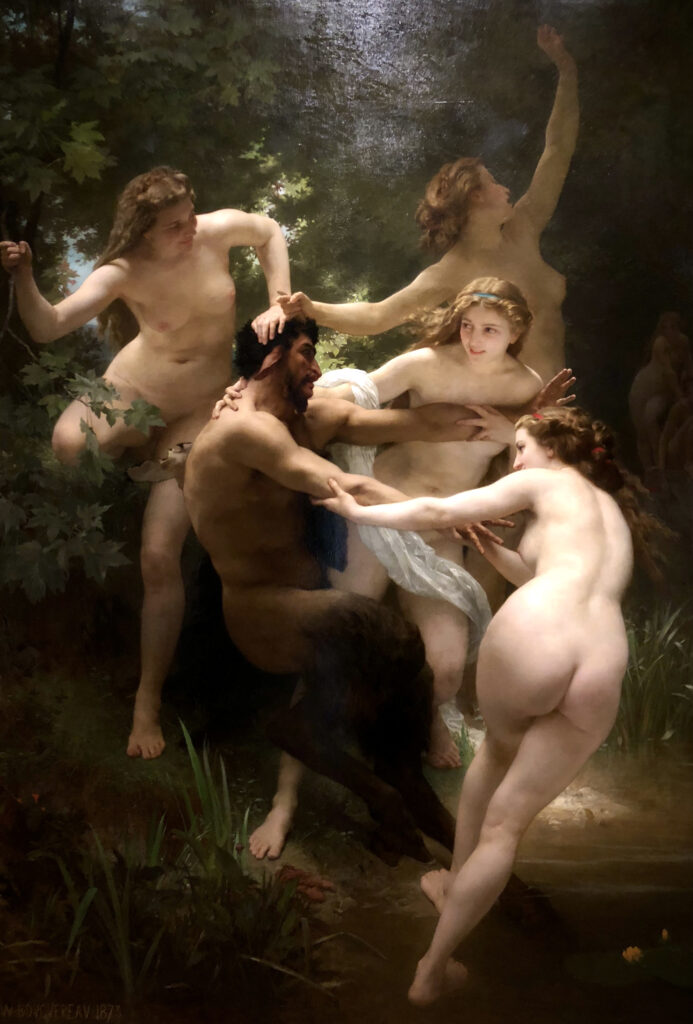
“Nymphs and Satyr” (1873) by William-Adolphe Bouguereau, on display at The Clark Art Institute in Williamstown, Massachusetts. Photo by Michael Aaron Gallagher.
During my travels so far, I have seen Bouguereau paintings at the Norman Rockwell Museum in Stockbridge, Massachusetts, The Clark Art Institute in Williamstown, Massachusetts and the Appleton Museum of Art in Ocala, Florida. I look forward to discovering more of his paintings someday, and I will be sure to share pictures if I am permitted to photograph them.
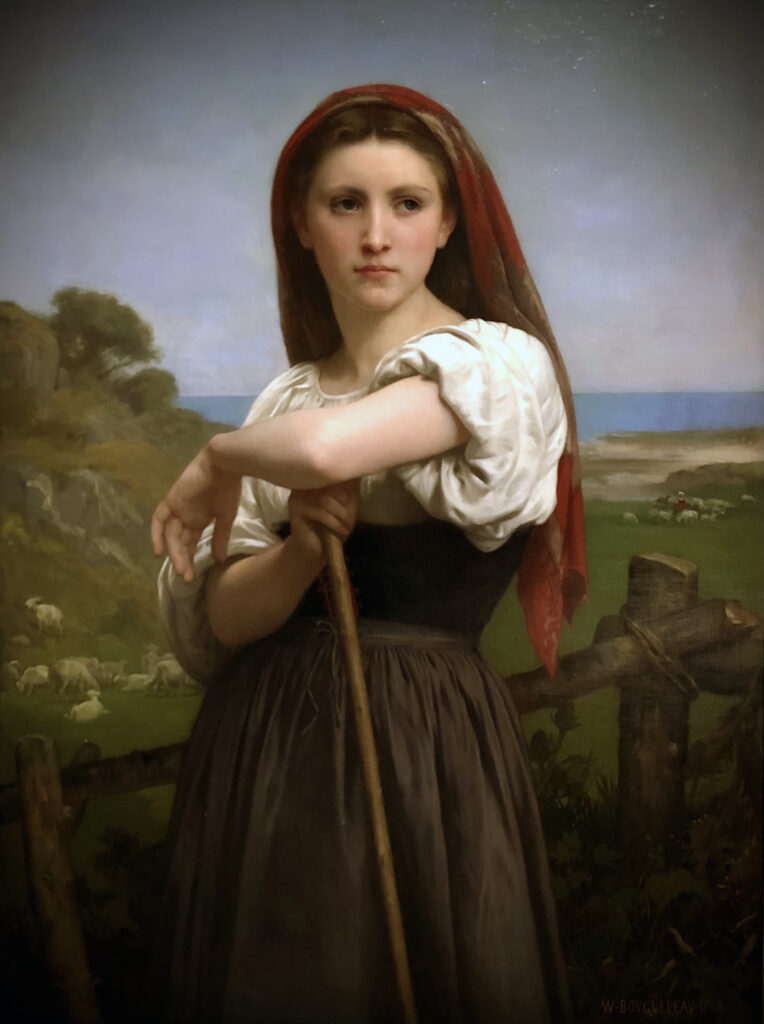
“Jeune Bergère (young shepherdess)” (1868) by William-Adolphe Bouguereau, on display at The Appleton Museum of Art in Ocala, Florida. Photo by Michael Aaron Gallagher.
